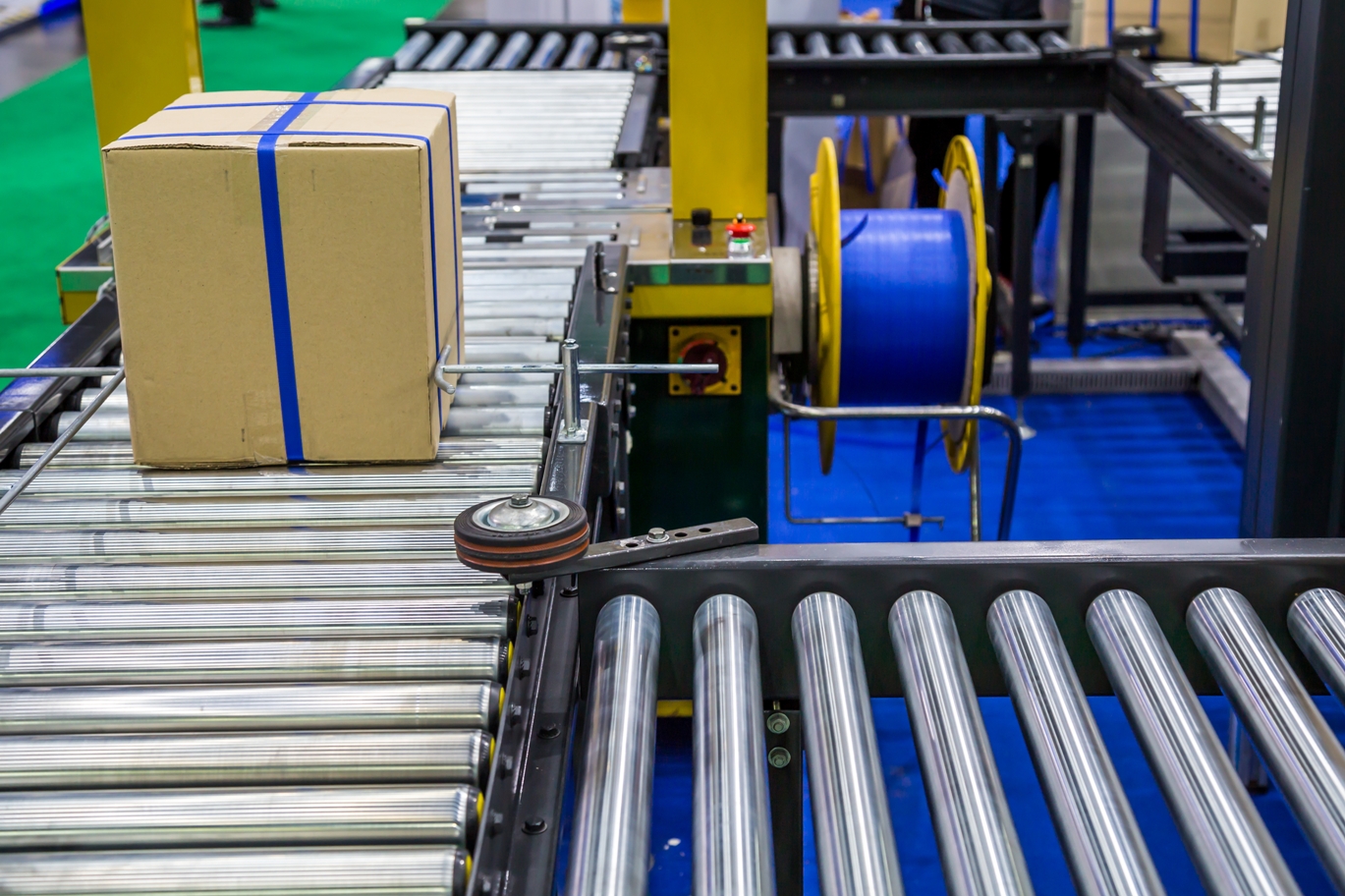Polypropylene strapping is both effective and economical. It’s also strong and easy to apply, either manually or via machines. You’ll find it in different widths, thicknesses, and polymer variations making it easy to source the best strap for required applications.
Widely used across many industries for light applications, polypropylene strapping securely packs individual items and bundles, as well as cartons and pallets. Although it has drawbacks, the strap’s benefits outweigh them.
Why choose strap made of polypropylene over other forms of strapping?
Its benefits include:
- Its strength, combined with its light weight, and ease of use.
- High elongation, that is, stretchiness. Polypropylene strapping’s stretch secures items well and prevents them from shifting during transport.
- Its ability to be tensioned—although it loses its tension rapidly.
- Its suitability for fragile items: unlike steel strapping, polypropylene strapping won’t scratch delicate materials.
- Its safety. Unlike steel strapping, polypropylene strapping offers few dangers and requires little training.
- Its ease of recycling.
You can easily recognize polypropylene strapping by its embossing (this aids tensioning.) If you wish, it can be printed with your company or product’s name, helping identify your products and offering marketing benefits.
The product is easy to apply, either manually, or for high-volume operations, by machine. The application method you choose depends on your needs.
Polypropylene strapping tools: manual, battery operated, or machine?
Polypropylene strapping is available in grades suitable for use by manual and battery-operated tools, as well as for strapping machines.
Once the strapping is applied to a package, it needs to be tensioned, then sealed. Sealing options include heat seals, as well as buckles. For heavier packages, consider heavy duty metal seals.
Battery operated friction weld strapping tools may be a good choice for you, because they save time. Not only can these tools tension the strap around a package, they seal the strap as well in a single operation.
Applying strapping manually takes time, so if you’re dealing with high volumes, a polypropylene strapping machine can be a good investment. It can save money too.
A polypropylene strapping machine for high volume operations
Expert operators can apply strapping to a package, then tension and seal it quickly, but for speed and efficiency a human is no match for a machine. Not only does a strapping machine strap faster, it applies the strapping more consistently and tightly, so it uses less tape.
If you’re concerned about product damage, a polypropylene strapping machine has another major benefit: the amount of tension it applies. Polypropylene quickly loses tension, up to 50% of its tension an hour after application. Since a machine can apply more tension than a human operator, there’s less likelihood of damage to products.
Two types of strapping machine are popular: semi-automatic, and fully automatic. Both types of machine are powerful, fast, and efficient. They’re also fitted with wheels, so they’re maneuverable.
If bottlenecks are causing problems in your operation, you may be looking at polypropylene strapping machines, and wondering whether a semi-automatic, or fully automatic machine is the best choice.
No matter which you choose, a strapping machine can strap a package, or a bundle of packages, securely within moments. Not only is a machine economical because it uses less tape, it does the hard work. This means workers suffer fewer injuries because they’re less tired.
A semi-automatic polypropylene strapping machine: an economical solution
A semi-automatic polypropylene strapping machine offers speed, consistency and reliability for your applications. With an archless machine, these easily strap awkwardly-shaped packages, at a rate of 2.5 seconds per strap.
This machine is also relatively small, with a small footprint. You can move it around your warehouse, as needed.
Once its interior is fitted with a roll of polypropylene strapping, the semi-automatic strapping machine simply requires the operator to lift a package onto it, then loop tape around the package. Almost instantly, the strapping machine tensions, seals and cuts the strap. Most packages can be strapped within a minute or less.
For high-volume strapping situations, explore fully automatic strapping machines.
A fully automatic polypropylene strapping machine: great for high volume operations.

Unlike a semi-automatic machine, a fully automatic polypropylene strapping machine requires less input from an operator. Once a package is on the machine, the machine loops the strap, then tensions, seals and cuts the strap almost instantly. To apply additional strapping, the operation turns the package on the machine.
If you’re looking for speed and ease of use, a fully automatic strapping machine can apply straps at a rate of 29 straps per minute, with automatic tension control. It’s suitable for most operations, because it only requires single phase power.
Choose the best polypropylene strapping machine for your applications
Choosing the best polypropylene strapping machine can be challenging. If you need assistance, speak to your trusted packaging supplier to understand the best options for your needs.
Company bio - Gateway Packaging sources the most innovative packaging supplies from across the world to give excellent packaging supplies and solutions that are both cost-effective and efficient to Australian manufacturers.
Put yourself in the number one position for Technology Accepting Guest Posts category by sending email with your blog at deskgrass@gmail.com
